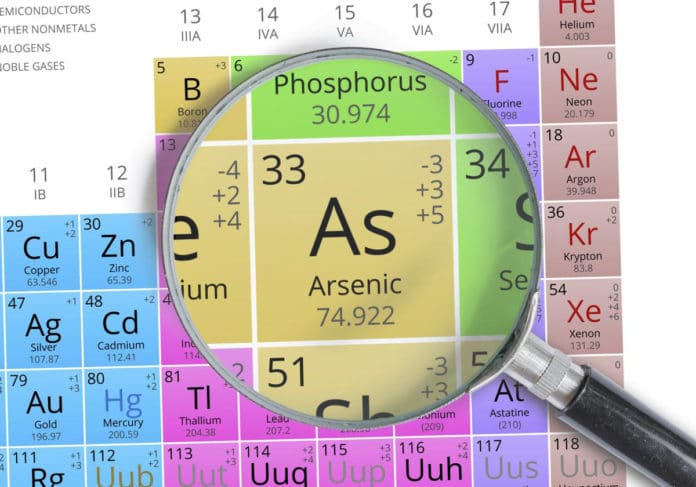Oxygen is necessary for the survival of living beings as it provides energy to us to do our daily activities. This oxygen also serves as a vehicle for electrons, gaining and donating electrons as it powers through the metabolic processes.
However, for half of the time, life has existed on Earth, there was no oxygen present, and for the first 1.5 billion years, we don’t know how these systems worked.
Various hypotheses suggested how life’s processes functioned in the absence of oxygen have mostly relied on hydrogen, sulfur, or iron as the elements that ferried electrons around to fulfill organisms’ metabolic needs.
But these hypotheses are contested. Photosynthesis is possible with iron, but there is no evidence in the fossil record before oxygen appeared on Earth. In hydrogen, the energetics and competition for hydrogen between different microbes show it is highly unfeasible.
A new study by the University of Connecticut suggests that lifeforms likely used arsenic before there was no oxygen on Earth.
The link with arsenic was strengthened in 2014, and scientists found evidence of arsenic-based photosynthesis in deep time.
Finding an analog to the conditions on early Earth is quite challenging for several reasons. For example, the proof shows early microbes captured atmospheric carbon and created organic matter when volcanic emissions were frequent, UV light was extreme without the ozone layer, and oceans were a toxic soup.
Another tricky part of working within the fossil record, particularly those as ancient as some stromatolites, is that few left because of the cycling of rock as continents move. Notwithstanding, a breakthrough happened when the team found an active microbial mat, currently existing in the harsh conditions in Laguna La Brava in the Atacama Desert in Chile.
The mats have not been studied previously but present an otherworldly set of conditions, like early Earth. The mats are in a unique environment, which leaves them in a permanent oxygen-free state at high altitude where they are exposed to wild, daily temperature swings, and high UV conditions. The mats serve as powerful and informative tools for genuinely understanding life in the conditions of early Earth.
UConn Professor of Marine Sciences and Geosciences Pieter Visscher said, “We started working in Chile, where I found a blood-red river. The red sediments are made up of anoxygenic photosynthetic bacteria. The water is very high in arsenic as well. The water that flows over the mats contains hydrogen sulfide that is volcanic in origin, and it flows very rapidly over these mats. There is no oxygen.”
Scientists showed that the mats were making carbonate deposits and creating a new generation of stromatolites. The carbonate materials also revealed arsenic cycling evidence—that arsenic is serving as a vehicle for electrons—proving that the microbes are actively metabolizing arsenic, much like oxygen in modern systems.
Visscher says these findings, along with the fossil evidence, give a strong sense of the initial conditions of Earth.”
“Arsenic-based life has been a question in terms of, does it have a biological role, or is it just a toxic compound?”
That question appears to be answered: “I have been working with microbial mats for about 35 years or so. This is the only system on Earth where I could find a microbial mat that worked absolutely in the absence of oxygen.”
Visscher points out that an important tool they used to perform this research is similar to one onboard the Mars Perseverance rover, currently en route to Mars.
“In looking for evidence of life on Mars, they will be looking at iron, and probably they should be looking at arsenic also.”
Journal Reference:
- Pieter T. Visscher et al. Modern arsenotrophic microbial mats provide an analog for life in the anoxic Archean, Communications Earth & Environment (2020). DOI: 10.1038/s43247-020-00025-2
